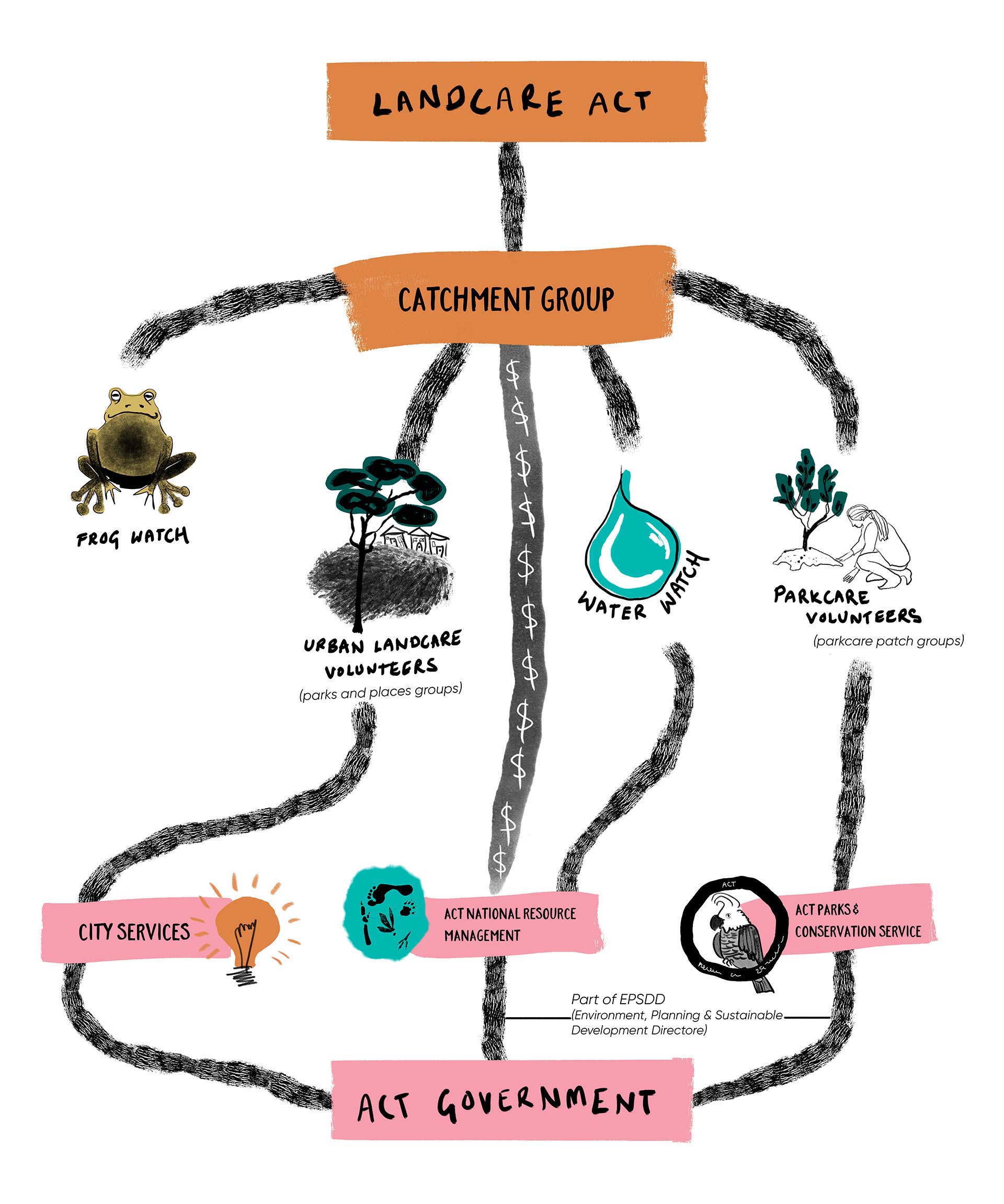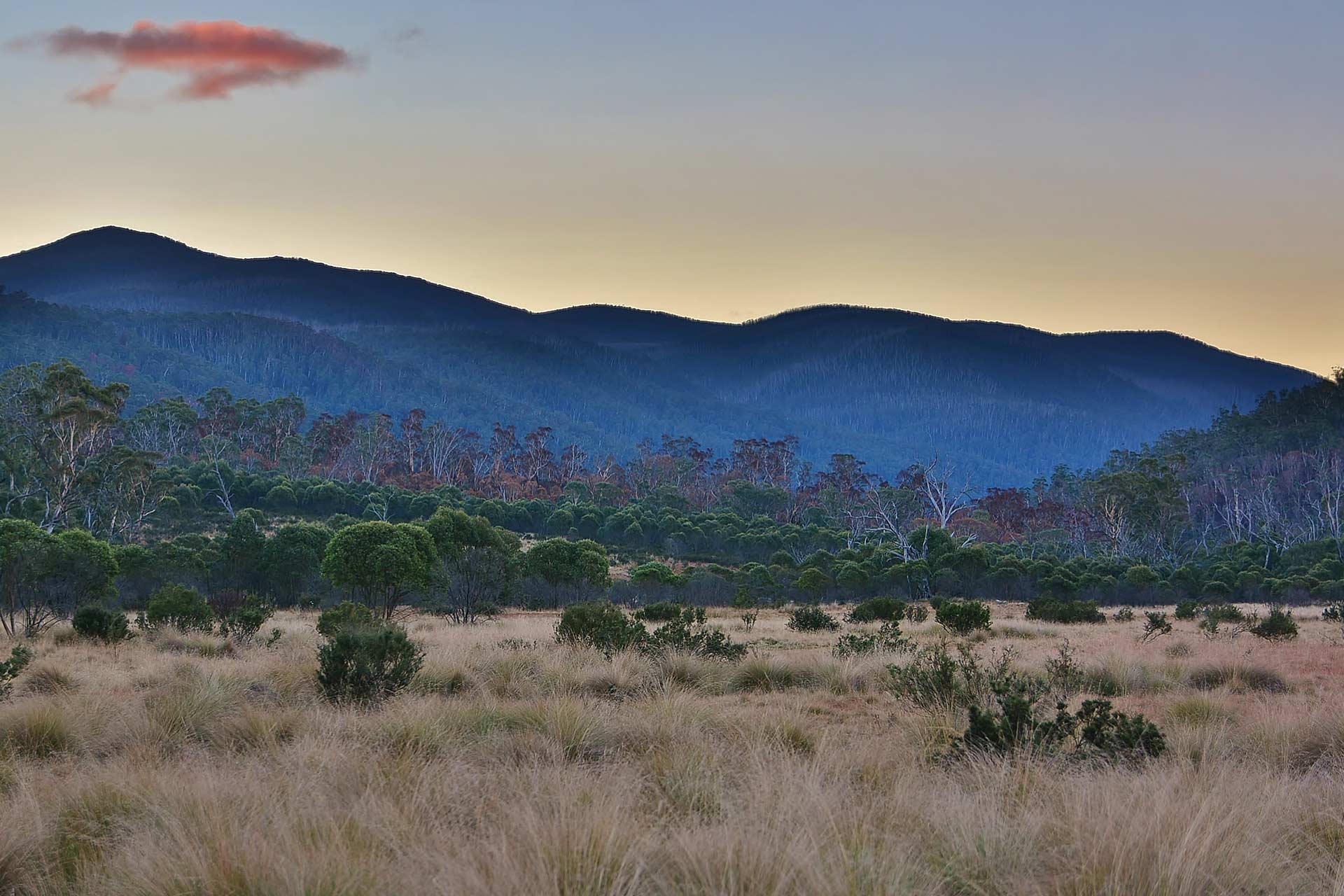Successful volunteer programs don’t happen by accident. Environmental volunteering in the ACT is underpinned by a raft of community and government organisations providing support services, from training to equipment to funding.
The relationships between these different support structures can be complex; a volunteer group may work with several different government agencies and community organisations at once, in a variety of different ways. The entities a volunteer group works with varies depending on the geographic location of the group, the part of government that manages the land where they are working, and the type of projects they are doing.
On this page you can find out more about some of the organisations which support environmental volunteers in the ACT. These have been divided into community-based organisations, which are independent not-for-profits; and government agencies, which are part of the ACT Government and staffed by paid public servants. These organisations often work with one another as well!

Community Organisations
The Canberra region has a number of community-based not-for-profit organisations which support or work with ParkCare and Landcare groups and citizen science volunteers, as well as running their own volunteer programs. Most have a membership model, allowing anyone who is interested to sign up to get involved with the organisation’s work. They are entirely independent of government, although they may receive government funding or grants.
These organisations tend to have either a geographic or thematic (such as grasslands or birds) focus to their work, but often incorporate both citizen science and hands on land management work in their activities. Most are incorporated – which gives them legal status and enables them to hold funds – have sophisticated governance arrangements, and a high level of expertise and commitment among their members.
Below is a brief introduction to some of the larger community organisations operating in the ACT. We have included links to their websites so you can find out more about them.
Ginninderra, Molonglo and Southern ACT Catchment Groups support smaller unincorporated groups to access funding and deliver a range of projects at their sites. They run workshops and other learning activities for volunteers and play an important role in supporting volunteer networks in their local area. They also run their own volunteer activities, ranging from supporting bushfire recovery in Namadgi National Park to cleaning up urban wetlands. They are an integral part of the Waterwatch and Frogwatch programs, employing the coordinators who work with and support the volunteers for these programs on a daily basis.

The catchment groups are members of Landcare ACT, an organisation which advocates for the interest of on-ground volunteers at the territory and national level. They are run by volunteer management committees and each have a few paid staff. This report, written by Southern ACT Catchment Group, provides a more in-depth look at what the catchment groups do and the benefits they provide to the environment and the ACT community.
Greening Australia is a national environmental enterprise which has a regional presence in the ACT. Its volunteers work on many different conservation projects across the ACT region. Volunteers also help to run its nursery, where plants from the local area are grown and tended ready for use in revegetation work and by Greening Australia and other groups.
Friends of Grasslands, Canberra Ornithologists Group and the National Parks Association of the ACT are wholly volunteer-based organisations which focus on a specific theme or region. They are well-established organisations whose volunteer members hold vast amounts of local knowledge and expertise. They bring this expertise to partnership projects with other environment groups, as well as supporting academic and government conservation research. You can read our case studies on Friends of Grasslands and the National Parks Association of the ACT.

Championing critically endangered grasslands
Native grasslands have been decimated since European invasion, and this groups works tirelessly to protect what remains Volunteering type: environmental […]
Read more
Without this group, there would be no bush capital
Forging a national park, researching rare reptiles, curating art shows, and forming their own publishing house – this multi-talented group […]
Read moreGovernment Agencies
In the ACT, most of the land on which volunteers work is owned and managed by the ACT Government. This means that volunteers must liaise closely with government staff in order to perform their tasks safely and legally. Different agencies within the ACT Government are responsible for land management depending on the designated use of a particular area.
The two main areas within ACT Government that work with volunteers doing on-ground environmental management and citizen science are City Services Division within Transport Canberra and City Services Directorate, and Environment, Heritage and Water Division within the Environment Planning and Sustainable Development Directorate.
In broad terms, land managed by the City Services Division has public amenity and recreation as its primary purpose, while land managed by the Environment Division has conservation as its primary purpose. Other management aims for both agencies include bushfire protection, flood protection, public safety, protection of water quality, and tourism and commerce.
City Services has a very diverse range of functions relating to municipal management, including responsibility for management of public land within the city that does not form part of Canberra Nature Park. This includes grass mowing, urban tree management, and maintenance of open spaces such as parks and playgrounds. Many of these pockets of urban greenspace have volunteer groups working to enhance their natural and community value. These are generally known as Urban Landcare groups and are supported in their work by a small team of City Services staff.
Within Environment, Heritage and Water Division:
The Parks and Conservation Service (PCS) has responsibility for management of Canberra Nature Park within the city itself, as well as Namadgi National Park, Tidbinbilla Nature Reserve, and forestry plantations. PCS coordinates a volunteer program known as ParkCare which includes several different streams, affording different types of volunteer opportunities.
ACT Natural Resource Management (ACT NRM) funds and facilitates the regional Waterwatch and Frogwatch programs and provides some funding for community-based environment groups such as the ACT catchment groups and Greening Australia. It also runs the ACT Environment Grants program which provides project-based funding for community groups.
The Conservation Research Unit makes use of volunteers in its ecological survey work and is a key supporter of Canberra Nature Map.

